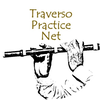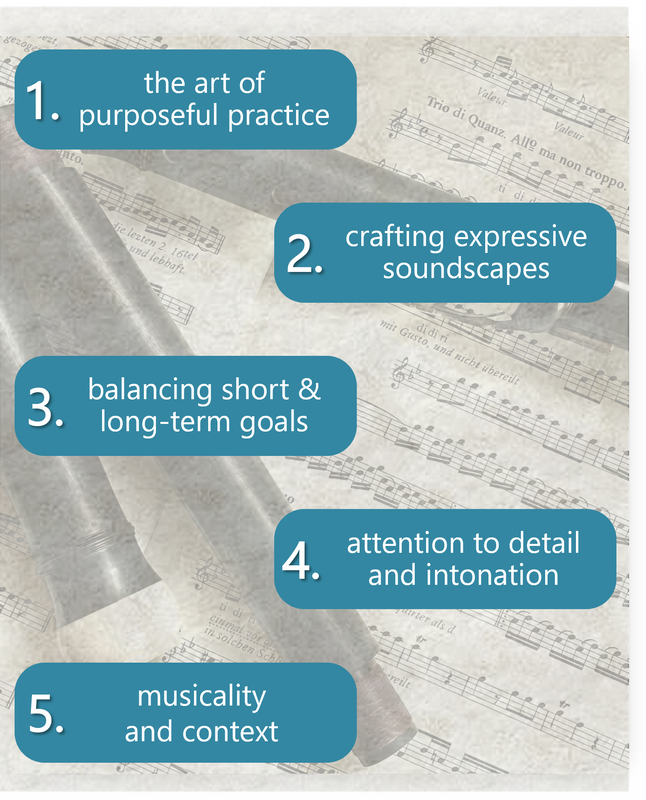|
We have asked experienced baroque flute players to unveil the key elements that should never be missed to shape a comprehensive and effective daily practice routine.
The responses we gathered were extremely insightful and enlightening and the general emphasis was for a harmonious blend of these elements that contributes to a well-rounded baroque flute practice. We've distilled this wealth of knowledge into 5 core elements that enjoy a general consensus among experts. Here's a brief overview with practical suggestions to enrich your baroque flute journey. ... What are the key elements and unmissable points of daily practice? ... |
|
1. The Art of Purposeful Practice
|
♪ Infuse meaning into your exercises by understanding their objectives.
♪ Engage your mind during practice to avoid mechanical repetition. ♪ Analyze exercises, identify objectives, and listen actively. ♪ Prioritize progress by tackling specific challenges. ♪ Set clear, personalized goals for each session based on identified needs and capacities. |
|
2. Crafting Expressive Soundscapes
|
♪Prioritize instrument response, sound quality, and embouchure flexibility.
♪Conceptualize breathing as a violinist uses a bow, experimenting with various air speeds. ♪ Focus on achieving a resonant, stable sound, exploring dynamics and harmonics. ♪ Experiment using different vowel sounds and focus on relaxed jaw. |
|
3. Balancing Short and Long-Term Goals
|
♪Maintain a balance between general improvement and specific objectives and deadlines.
♪ Focus on efficient problem-solving for steady progress. ♪ Aim for incremental improvements and avoid pushing to your limits. |
|
4. Attention to Detail and Intonation
|
♪ Take extreme care of intonation.
♪ Recognize and emphasize the diverse character, intonation, and technical challenges in different keys. ♪ Use scales and arpeggios to master resonance and perfect tuning across tonalities, not just for finger speed ♪Adapt practice style based on daily variations and self-awareness. |
|
5. Musicality and Context
|
♪ Connect technical exercises to musical goals for a holistic playing experience.
♪ Considers the experience of creating magic with long notes. ♪ Prioritize phrasing, dynamics, and shaping for musicality. ♪ Incorporate vocal pieces for phrasing exercises and explore different languages for musical expression. ♪ Place your playing within broader musical and historical contexts. |



